
#3 Silicon Valley Going Green: How Universities Are Spinning Out Climate Solutions
The Universities surrounding Silicon Valley have always been instrumental to the area’s success, laying the groundwork for many of the technological innovations we use. This week’s ‘Going Green’ article looks at how universities such as Stanford and Berkeley are working to foster green innovations – and what the Danish universities could learn from them.
Universities play a key role in the green transition. Their research constitutes an important knowledge base for understanding the environmental challenges we face—and the potential solutions. Nonetheless, there are acknowledged gaps in the journey from university research to its commercialization, metaphorically known as valleys of death. This refers to the fact that many promising discoveries never get out of the lab and into the market, and consequently a lot of potential goes unfulfilled.
“The purpose of the university is to generate knowledge and applications to better the human condition.” – Marc Tessier-Lavigne, President of Stanford University speaking at the conference Accelerating Climate Solutions.
In California, universities have successfully worked on bridging these gaps. They have created an efficient infrastructure and collaboration with their surrounding ecosystem, which results in an impressive track record of spinning out companies. Among the ingredients in the system are the nurturing of an entrepreneurial mindset, and access to a comprehensive ecosystem that supports students and researchers who wish to transform their ideas into something that has impact at scale.
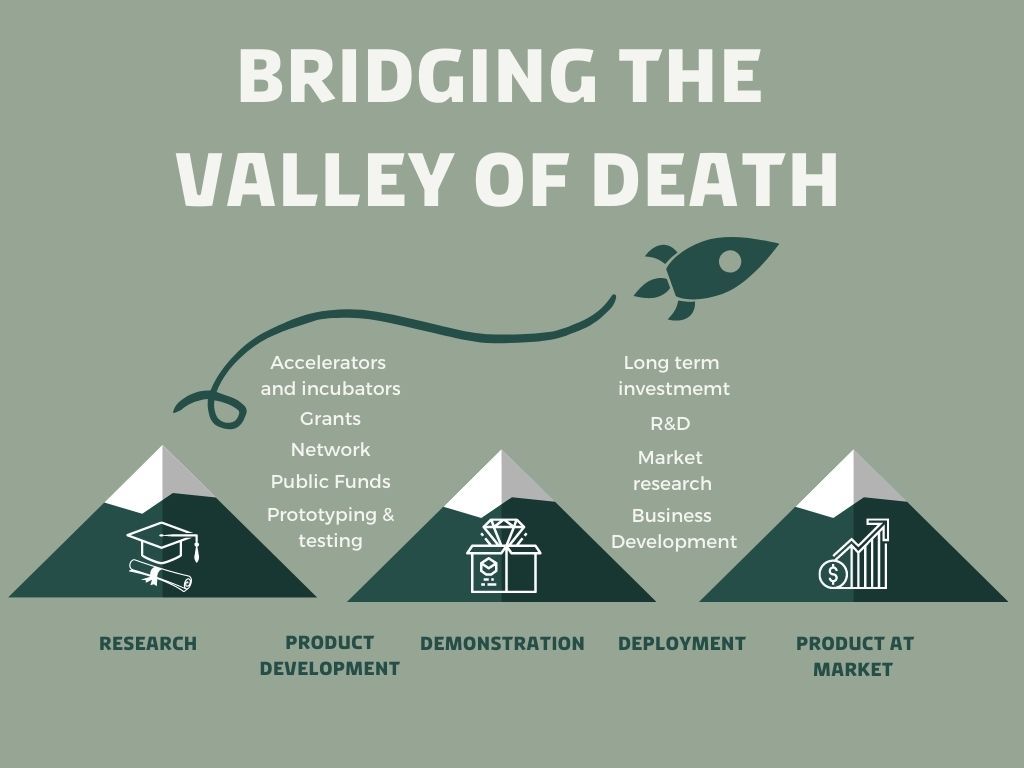
Fostering Green Entrepreneurship in Education
Californian universities have recognized that they play an important role in installing an entrepreneurial mindset in their students and have developed programs in close collaboration with the industry in Silicon Valley. The focus on entrepreneurship and university-industry collaboration is a feature of the ecosystem in Silicon Valley, and it is also present when it comes to climate solutions. Below are some examples of how Stanford University, UC Berkeley and UC Davis take a collaborative approach to climate challenges:
- Stanford Climate Ventures is a program where multi-disciplinary teams learn how to bring their promising new ideas in energy and climate technology to market. Through cross-disciplinary courses in close collaboration with industries, the program has delivered an impressive number of spin-out companies.
- At UC Berkeley’s Sutardja Centre for Entrepreneurship, they work with an approach called “Future of X” or “X-Labs”, where the “X” refers to new technologies and emerging industries that can change the world. The centre, for example, hosts the Alt: Meat Lab, which is a hub connecting students, entrepreneurs, venture capitalists and industry leaders interested in creating the plant-based food of the future.
- The Innovation Institute for Food and Health at UC Davis addresses global food and health challenges by connecting faculty and student researchers with investors and industry experts. For example, a current call asks for cutting-edge projects to improve energy efficiency across the food system.
These entrepreneurship programs have proven to spike interest in entrepreneurship among the participants. A comprehensive Stanford Innovation Survey from 2011 shows that 60 % of start-up founders who received venture investment within three years of graduating had participated in an entrepreneurship course at Stanford.
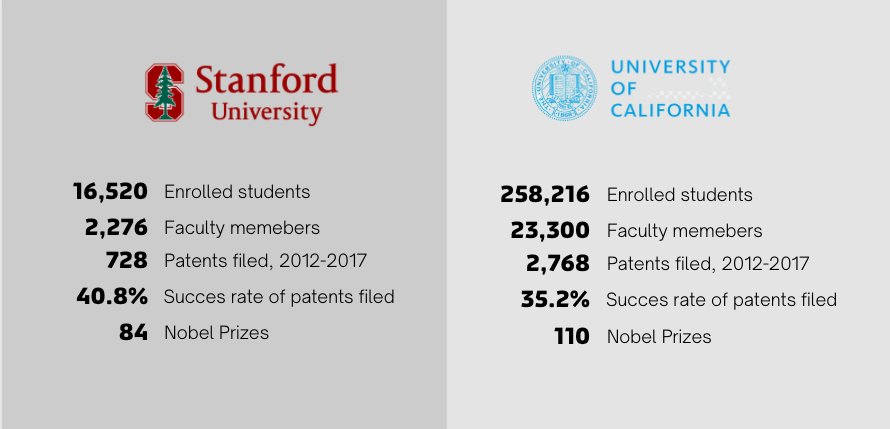
Transferring Research to the Market
Education in climate entrepreneurship is a great way to create a mutual understanding and build the next generation of climate entrepreneurs. In 2019, Stanford was awarded the most innovative university and UC San Francisco, UC Davis, and UC Berkeley all rank among the top 30 universities in the United States for R&D expenditures. However, for innovation to be successful, it needs to be implemented. The universities in California have various programs in place that support green start-ups, in order to make sure that new ideas and projects take off.
These commercialization efforts are underpinned by strong tech-transfer offices, which deliver expertise on matters like intellectual property rights and conduct marketing of technologies to relevant companies. Stanford’s Office of Technology Licensing has also developed a framework to allow researchers to work as consultants in start-ups. Acknowledging that many professors with innovative technologies may not be interested in leaving the university to find a company, they can instead consult, while others bring the technology to market.
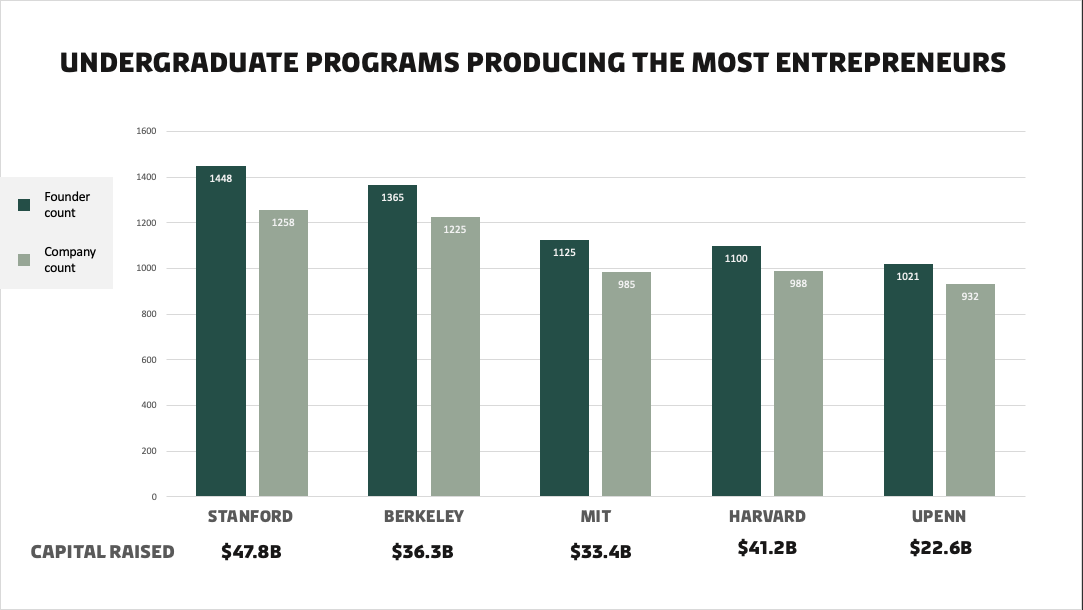
Since climate tech start-ups have different needs than other start-ups, the universities have developed specialized programs. Climate tech solutions often rely on deep tech, which may take longer to develop and require larger investments. Moreover, they often require large-scale implementation or even a system transformation, making such solutions challenging to test and implement. The specialized programs address these challenges by providing students access to grants, labs, mentorship and crucial networks of start-ups, investors and industry. For instance, the TomKat Center’s Innovation Transfer Program supports Stanford University faculty, staff, and students in commercializing breakthrough technologies and innovations in sustainability. The program offers grants, mentors and guidance and a strong entrepreneurial network and help to determine when new technologies are ready for external investment.
Innovation turning into companies
According to PitchBook’s 2020 university rankings, Stanford University was number one in the world with 1,258 start-up companies and $47.8 billion in capital raised. UC Berkeley is the runner up with 1,225 start-up companies and $36.3 billion in capital. Among the spin-outs are notable green companies such as Tesla and Impossible Foods founded by Stanford alumni. These companies are often established while the founders are students, and consequently the companies are often head-quartered in the same area – reinforcing the well-educated work force and innovation ecosystem in the Bay Area.
Another example with federal funding is Cyclotron Road. This fellowship program was created by Lawrence Berkeley National Laboratory in conjunction with the US Department of Energy. The program addresses the gap between federal grants dollars for research and traditional early-stage investment by allowing early-stage hardware innovators the time and resources to de-risk their technologies while determining a pathway to market in order to attract more traditional forms of capital. Once accepted, fellows are granted access to Lawrence Berkeley National Lab and UC Berkeley facilities for two years, while receiving a generous stipend, extensive mentorship, entrepreneurial training, and networking opportunities.
Finally, the universities also have programs in place that support the commercialization of emerging technologies. For instance, the Berkeley Hass School of Business hosts the program Cleantech to Market (C2M), which matches start-ups that are already part of programs such as TomKat or Cyclotron Road with graduate students that can help them accelerate the commercialization of their leading cleantech solutions.
R&D a Cornerstone in the Fight against Climate Change
In Denmark, the Government has launched a new strategy, “The Green Solutions of the Future” (DK: Den Grønne Forskningsstrategi), boosting investments in green research, technology and innovation. With a key part of the strategy to build strong collaboration with industry and support climate research from university to market. The R&D and tech transfer capacity of Silicon Valley has had large impact on the digitalization of our economies. Harnessing the successful model of entrepreneurial education, ecosystem collaboration and tech transfer agencies in the fight climate change could prove transformational.
At Innovation Centre Denmark Silicon Valley, we create gateways to learning, networks and partnerships with Californian universities, which are working on bridging the green valley of death.
This article was written by The Innovation Centre Denmark in Silicon Valley and is brought to you as a part of the ‘Silicon Valley Going Green’ series in collaboration with the Innovation Centre.






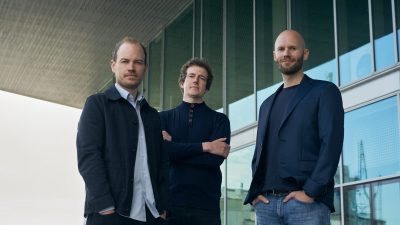
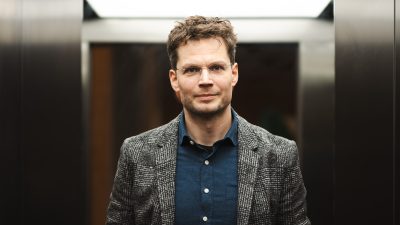




Comments